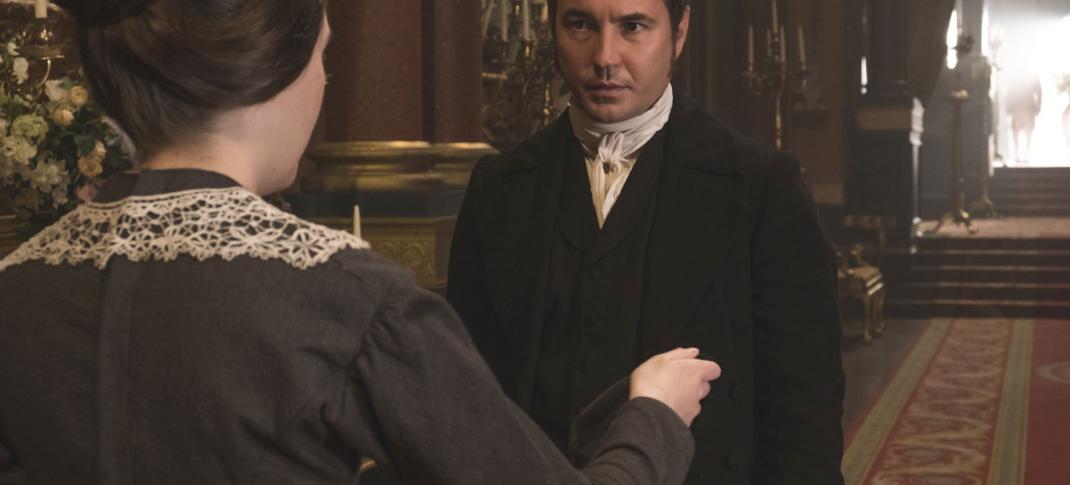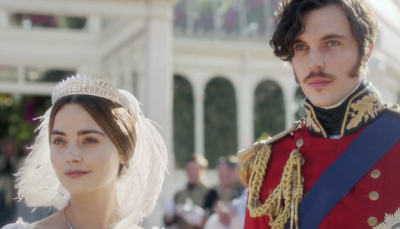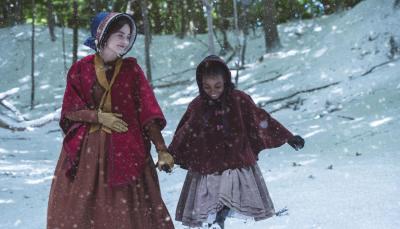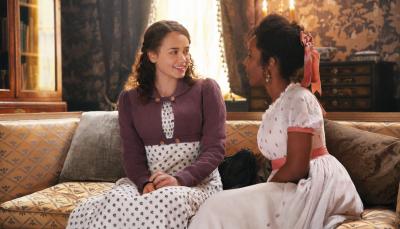Know Your 'Victoria' History: "Faith, Hope & Charity"

Think you know the history of Queen Victoria's reign? Wondering how much of the history portrayed by PBS series Victoria is accurate? We run down the truth behind the drama in the latest episodes of Season 2, "Faith, Hope, and Charity."
The Irish Potato Famine
We've skipped ahead in time again, and skipped the birth of yet another one of Victoria's endless children to get to the Great Irish Potato Famine. Since this season was covering the 1840s, it was only a matter of time until we had something that referenced this horror that occurred from 1845-1849. In terms of what the famine was like, the show is startlingly frank. Victoria, as a series, is at times as deep as a puddle, and it's surprising how hard in on the historical accuracy they go here, including an honest accounting of the racism by the Protestant community towards the Irish Catholics that made the situation worse.
But here's where the show isn't so accurate. It has consistently established Victoria to be a woman far ahead of the times socially (sometimes comically so). She isn't allowed to have these backward, racist attitudes. But there's little historical basis to say that she gave a fig about what was happening in Ireland, though she did donate £5,000 towards famine relief. (That may seem like a lot, but it was actually mild compared to others.) In fact, the scale of the devastation is a good indicator the Queen didn't pay much attention to what was happening over there, or someone would have probably done something. But Victoria is lucky in that Netflix's The Crown has hammered home that the royal monarch is not allowed to express their political opinions. In fact, the few times Elizabeth has attempted to get directly involved in politics on that series, the show makes sure to highlight the negative fallout. Moreover, other PBS films, like King Charles III, are based upon the idea that the monarchy would fall, should the monarch in question attempt to do anything but smile and be a figurehead.
Victoria uses this to their advantage by insisting that the queen's hands were tied, and that anyone laying this horrific cataclysm at her feet is wrong. She would have done something — visited Ireland, drawn attention to the plight, made something happen — if she could. It was the political cowardice of Sir Robert Peel and those other bigoted politicians who cared nothing for the people who were dying, who were really to blame.
The Irish Question
While we're on the subject of the Irish racism, let's talk about "The Irish Question" which was a real issue in the 1840s. It's mostly embodied on Victoria by Sir Charles Trevelyan (played by Edward Bennett), the man who was supposedly in charge of the official relief efforts. Yes, he is a real person, though here he stands in for all those who believed that the Irish were dying and that was just fine.
As the show makes clear, the Irish were an oppressed people, with a Protestant minority forcefully overseeing a Catholic majority. The famine, in a way, solved this "Irish question" by hitting the Catholic population harder. Those back in London simply considered this divine retribution on a population that would not behave themselves and a necessary cull on the population. ( I was personally reminded of the 1980s when Republican leadership would claim that AIDS was divine retribution to the gays for their sinful existence.) Between those who died or emigrated west to North America, the population in Ireland was reduced by nearly 3 million.
As for Dr. Robert Traill (played by Martin Compston), yes, he also existed, even though his character on the show is more of a stand-in for all those on the ground in Ireland, seeing the famine first hand. There were many people like him who wanted, and who tried, to stop this tragedy. But without any sort of state help, it was like fighting the tides. In fact, googling Traill will bring up that he was actually an ancestor of Victoria creator Daisy Goodwin, which might explain why his story is front and center in the hour, and also one of the best hours of the show this season.
To be fair, when the famine was at its height in 1846, Peel did go before Parliment and suggest that perhaps, hey we should do something. But historians believe he did so because he had already seen the writing on the wall and knew he was on his way out as Prime Minister, and it would never pass anyway. Peel would lose his position as PM in only a few months time, succeeded by Lord John Russell. (Spoiler alert.)

Indoor Plumbing
Was Albert really responsible for the indoor plumbing at Buckingham Palace? The fact is, Albert is credited for having been responsble for making Buckingham Palace livable, period. Before Victoria came to the throne, it hadn't been the royal residence, and it was in a state of terrible disrepair. Albert supposedly spent most of the years between 1841 and 1847 bringing everything up to snuff, including a full reorganization of the staff (which has been hinted at here and there on the show). In 1847, the Palace was deemed too small for their continuoiusly growing brood, and a full-scale overhaul began, including the wing that now includes the famous "Royal Balcony," which was also supposedly Albert's idea.
None of this answers the question though, of whether or not Albert insisted on water closets. What we do know is that what few toilets that were in the palace when Victoria moved in were not ventilated. The place stunk, not only from waste but from soot and fires and everything else. Yes, what water closet expansions were done did happen under Albert, but whether he saw this as something all of London should aspire to? We'll have to just assume that that's true since his reputation as a reformer and innovator in the 1800s is solid.




